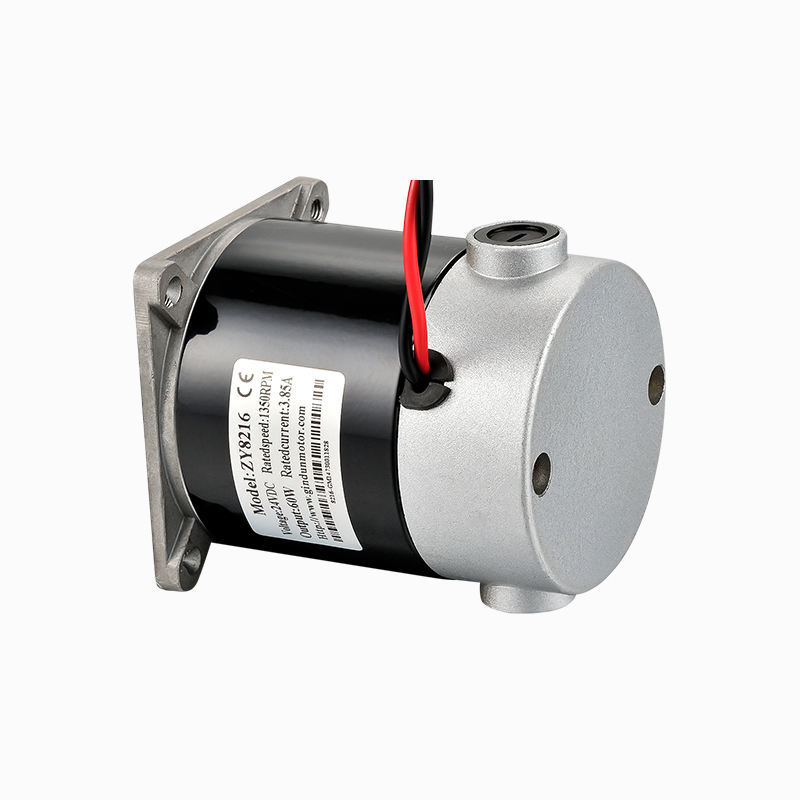Call us
+86-18023576732
+86-0579-89008006
Fax: +86-0579-82206899
Every electric motor, regardless of its construction, experiences a surge of current when it is energized. This surge, commonly referred to as inrush or starting current, can be several times higher than the rated running current. In the case of a Permanent Magnet DC Motor, the magnitude of this starting current depends on factors such as armature resistance, supply voltage, load torque, and the presence of any control circuitry. The question that often arises in practical applications is whether this initial current demand poses a significant impact on the power supply system and how it should be managed to ensure stable operation.

Nature of Starting Current in DC Motors
At the moment a motor is switched on, the rotor is stationary and no back electromotive force (back EMF) is generated. Back EMF typically acts as a counter-voltage that reduces the effective current flow once the motor reaches operating speed. Without this effect at startup, the only limiting factor is the armature resistance, which is generally very low to reduce losses during normal operation. As a result, the initial current can be several times the rated value, creating a sharp spike in demand. For smaller motors, this surge may be negligible, but in larger installations, the starting current becomes a crucial design consideration.
Potential Impacts on Power Supply Systems
The power supply system, whether it is a battery pack, a rectifier, or an industrial grid connection, must be capable of delivering the required inrush current without suffering from voltage dips or instability. If the supply cannot meet this sudden demand, several issues can arise. Voltage sag may cause sensitive electronic devices connected to the same source to malfunction. In severe cases, protective devices such as fuses or circuit breakers may trip, halting not only the motor but also other equipment dependent on the same supply. Furthermore, repeated exposure to large starting currents can stress power components, shortening their lifespan.
Mitigation Techniques for Starting Current
Several strategies are available to reduce the negative effects of high inrush current. One common approach is to introduce a series resistance or inductance at startup, limiting the current until the motor reaches sufficient speed to generate back EMF. Another method involves electronic soft starters, which gradually increase the voltage supplied to the motor, thereby smoothing the current rise. In battery-powered systems, pulse-width modulation controllers are often used to regulate current flow during startup, preventing abrupt surges that might damage cells or reduce system efficiency. Each technique has its own cost, complexity, and application suitability, but all serve to reduce stress on the power supply.
Application-Specific Considerations
The extent of the starting current’s impact depends heavily on the application environment. In small consumer devices, the motor’s current spike is usually well within the tolerance of the power source, making additional mitigation unnecessary. However, in electric vehicles, industrial automation systems, and large-scale robotics, the current surge can be substantial. Designers must analyze load conditions, duty cycles, and power source capacity to determine whether protective measures are essential. In cases where multiple motors are connected to the same supply, synchronized or staggered startup sequences may be employed to prevent simultaneous current peaks.
The issue of starting current is an inherent characteristic of electric motors, including those using permanent magnets for excitation. While the surge at startup can indeed place stress on the power supply system, its severity depends on motor size, application requirements, and the robustness of the supply network. With proper design considerations, including current-limiting techniques and advanced control methods, it is possible to mitigate potential negative effects. Understanding the dynamics of starting current not only helps engineers safeguard the power supply system but also ensures reliable and efficient motor operation in diverse practical settings.
Contact Us